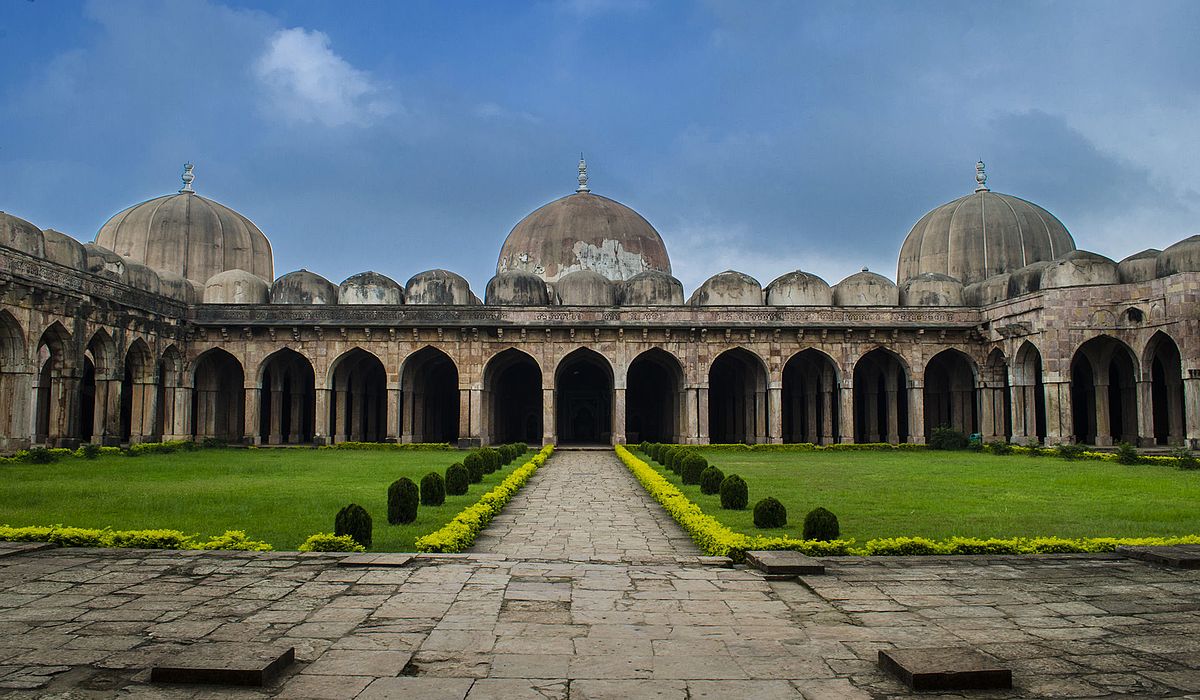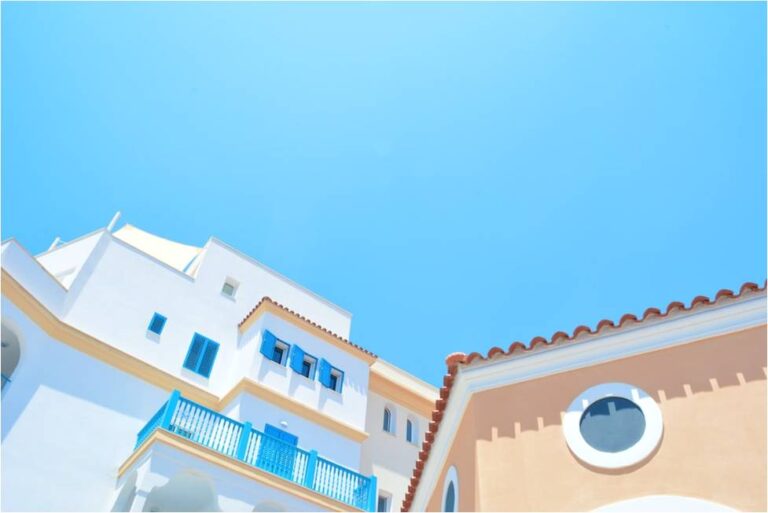
“It is abode of forts, invasions, conquest, valour, heritage and cultural diversities. It is Mandu, the city of joy and happiness.”
India is blessed with heterogeneity in which several cultures are intermingled. There are many cities towns and villages well known for their respective specialties. One such delightful place is Mandu. Many historical monuments and places are situated in this beautiful city. In the era of modernization where people are less interested in historical monuments it becomes foremost to promote their valuable essence.
Mandu is an ancient city in the central Indian state of Madhya Pradesh. Mandu is located in Dhar district of Malwa region of western Madhya Pradesh. It was founded as fortress city by Raja Bhoja of Parmar dynasty, later it was annexed by Muslim rulers of Delhi in 1304 AD. Afghan Nobel Dilawar khan was governor of Malwa and he established his own kingdom at Mandu. His son Hoshang Shah shifted capital from Dhar to Mandu and raised it to its greatest grandeur. Many Mughar rulers like Baz Bahadur, Ghiyasuddin Khalji and Hoshang Shah built many mosques and palaces.
The town of Mandu is situated at an elevation of 633 m. The Vindhyan Mountain Range extends in Mandu for 13 km,creating an auroa of nature. Earlier it acted as natural defences for The Kingdom of Parmaras. The Mandu fort of Paramras located in core of Mandu is separated from a deep and wide ravine called kakra kho. The fort was protected by 45 km long embankment having 12 main enormous archial gates viz. Alamgir Darwaza, Bhangi Darwaza, Kabaani Darwaza,Gadi Darwaza, Delhi Darwaza, Rampol Darwaza, Tripoltya Darwaza, Lohani Darwaza, Tarapur Darwaza, Bhagwaniya Darwaza, Hathya Por Darwaza and Jahangirpur Darwaza. The gates are located on mountains locally called as “Ghats”. These steep ranges also have many kuchha houses established by villagers which give us view of village lifestyles.
At a distance of 15 km from Dhar, there lies huge building called Jami Masjid. The construction of these ancient mosque was started by Hoshang Shah and later completed by Mahmud Khalji in 1454 AD. In interior of mosque a spacious hall about 13.7 sq m has enough space to accommodate hundreds of people. It was probably place where Muslim people worshipped during the regime of Mughlas. The beautifulJali works never fails to astonish us. Just adjacent to it the tomb of Hoshang Shah is situated. With artistic arched openings the mausoleum stands on square marble platform. Being influenced by Hindu style of architecture it gives us chance to adorn architectural beauty predates to medieval period. On opposite hand of Jami Masjid a Madarsa or preferentially called as Ashrafi Mahal is a great quadrangle enclosed on all sides by small cells for student. Not very far from Jami Masjid, the rock-cut caves known as Lohani caves are located. It was excavated in 11 century AD with yield of 80 sculptors related to Shiva. Historians believes some Shiva temples also existed here probably destroyed to use in Muslim buildings.
The love story of Mughal ruler Baz Bahadur and Rani Roopmati remains confined in walls of Mandu and our history books. The Baz Bahadur Palace and Rani Roopmati Pavailion symbolises their eternal love. Rani Roopmati was great reciter and poetess of Rajput origin. Her beauty and melodious voice mesmerized him, later he proposed her for marriage. As she belonged to lower strata she couldn’t refuse but instead she put a bet forward i.e to create a palace for her. It resulted in creation of Roopmati Pavailion. It is said that Roopmati came here every day to gaze out river Narmada. Subsequently they fall in love. Akbar was too fascinated by her beauty and said her to perform in his court. It aggravated the Baz Bahadur which consequently resulted as fight between them. Baz Bahadur lost and when Rani came to knew she commited suicide. Later Akbar with guilt released him but his wife demise led him to commit suicide. The palace of Baz Bahadur is a magnificent Islamic architecture. The palace stands on hill above a sacred tank called Rewa Kund where queen always came to take bath. It is said that the palace was annexed by him.
The Ship Palace or Jahaz Mahal was constructed during reign of Mandu Sultan Ghiyasuddin Khalji. It was built on narrow strip of land between waters of Munj and Kapur tank. It served as a Harem – a place where wives and mistresses of Mughal rulers llived, for 15000 wives of Ghiyasuddin Khalji. Surrounded by pond water, it seems to be floating gently above surface of water. The palace is an amalgamation of Afghan, Mughal, Hindu and Mesopotamian architectural style. It’s intricate carvings, precise design and primitive beauty makes it important tourist spot.
We can reach the Hindola Mahal via Jahaz Mahal Internal Road from Jami Masjid. Its literal meaning is ‘Swinging Palace’ and is believed to be built by Hoshang Shah in 1425 AD. The building is T- shaped and consists main hall having huge vaulted roof. Hindola Mahal was large meeting hall or Durbar. Hindola Mahal is one of prominent attraction in Mandu Palace complex. A long walk inside the Durbar definitely amazes every individual.
As Mandu is dominated with Muslim architecture, to peoples amazement, there is Jain temple in Mandu. The Jain temple is the sole non Muslim piece of architecture amongst the several mosques and mahals which dwells in the city. The temple is dedicated to Jain Tirthankars with idols of gold, silver and marble intensify the beauty of museum. There is also murals of Jain sermons and stories with moral endings. There is another Hindu site called Neelkanth, but in contarst it have Islamic influence on its architecture. The Neelkanth temple built with Islamic effect lies 4 km away from Mandu. This place stands on ancient Shiva shrine, later converted into pleasure palace of Akbar’s governor. It was built by Mughal governor Shah Badgah Khan. Historians also say that it was erected for Hindu wife of Akbar, Jodha. The temple preaches the superiority of emancipation over earthiness. The Neelkanth Mahadev temple is there with a Shivalinga which is placed few steps underground and there is natural spring of water from which abhishekam is done.
Other important monuments include Nahar Jarokha, Darya Khan’s tomb, Caravan Sarai, Sath Kothari cave, Somati Kund, Songarh gate, Tarapur gate, Taveli Mahal, Kapoor Talao, Jali Mahal, Champa Baodi, Chistikhan’s Mahal, Chor kot, Chor kot mosque, Dai Ka Mahal, Ek khamba Mahal, Gada Shah palace, Hamman, Malik Mugith’s tomb, Dilawar Khan’s mosque, Eco point, kakra kho and many more historical monuments provide us opportunity to explore rich variety of architecture existed in medieval period.
In the ambience of fruits Baobab fruit is famous, locally known as “Mandu’s Tamarind” or “Mandu Ki Imli”. It is not typically tamarind but almost taste like sour mango which gives delicious taste. Local vendors are seen selling them largely. When it comes to food Mandu accommodates most of Malwa cuisine. Malwa food is blend of Gujarati, Maharashtrian and Rajasthani delicacies. Locally stalls are there around monuments, selling common Indian foods like Poha, Kachori, Samosa, Bread Pakoda and Jalebis. But famous Malwa cuisine include some well known dishes like Palak Poori and Aloo Sabji, Matar Pulao, Dal Bafla, Papad ki Sabji, Sabudana Khichdi and many more. Regional sweets like Khopra Pak, Malpua, Jalebi and Imarti are famous in Mandu.
The shopping centers in Mandu have ethnicity in there products. Bazars in Mandu gives wide range of “what to buy?”. Specially handicrafts, decor, showpieces can be bought as mementos. The influence of tribal art is visible in the clothes and other textiles. Now a days urbanisation is on its par and also influencing Mandu as a result malls, hotels, resorts are clearly visible but concern is least as ethnicity of Mandu Bazars remains intact. The another big event to explore tribal handicrafts is in’Mandu Utsav”. At the end of the year the fest is celebrated with great enthusiasm. The festival provides chance to see activities like paragliding, rifle shooting, parasailing and witness cultural programmes performed by local artists. It also include sever tribal handicrafts workshops and programmes. Hence it is best to visit during last month of year.
Thousands of international tourist visit Mandu every year but the matter of concernis that Indians are less interested in historical places. We are more attracted towards foreign places. Today’s young generation prefer other destinations rather than opting for historic one. The historical places have there own quintessence. Their perpetual richness and speciality is fading day by day. As per conclusion it is essential for us to realise there importance as they provide us chance to explore history without opening books.
Name : Simran Bhati, Indore


